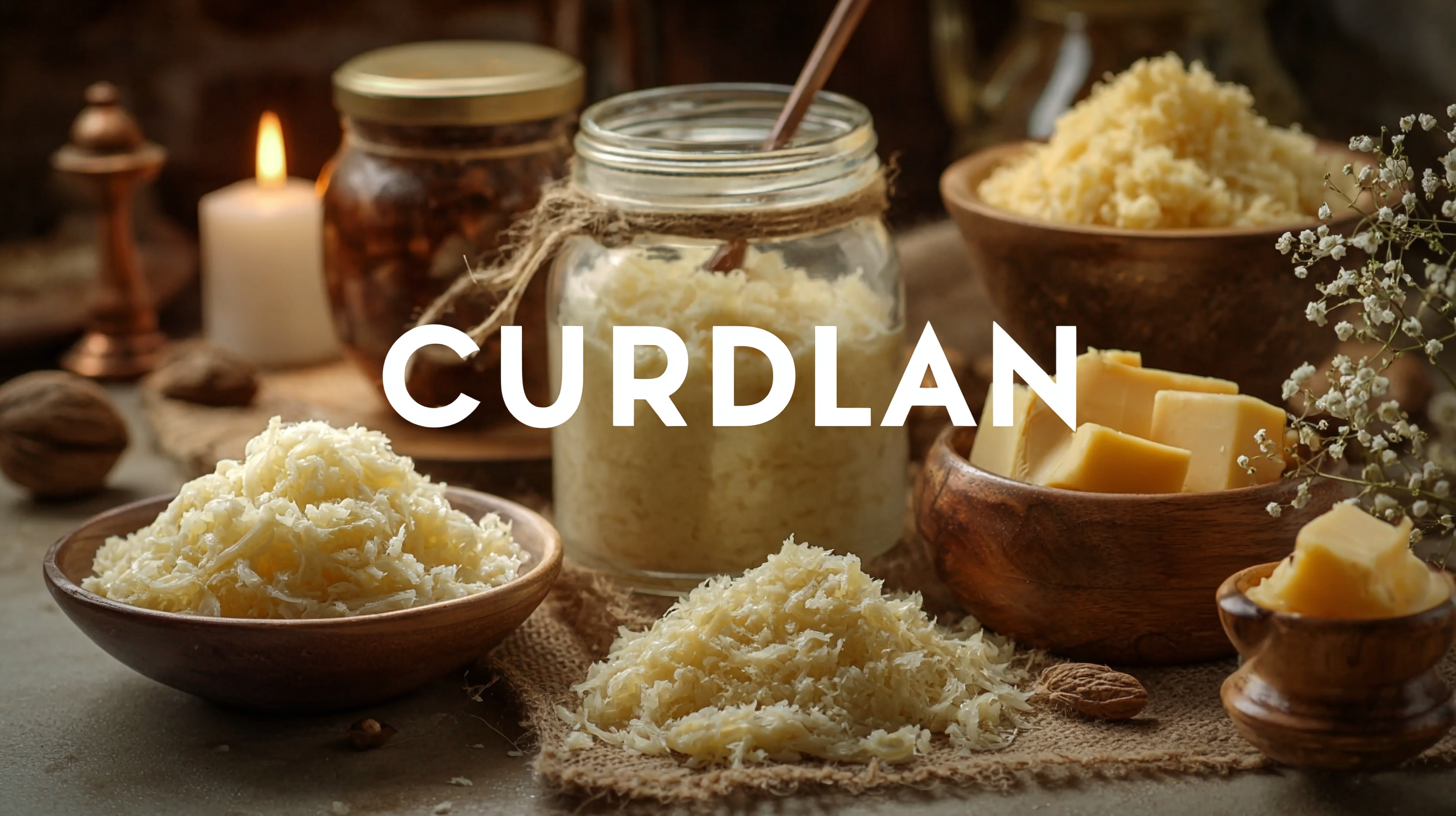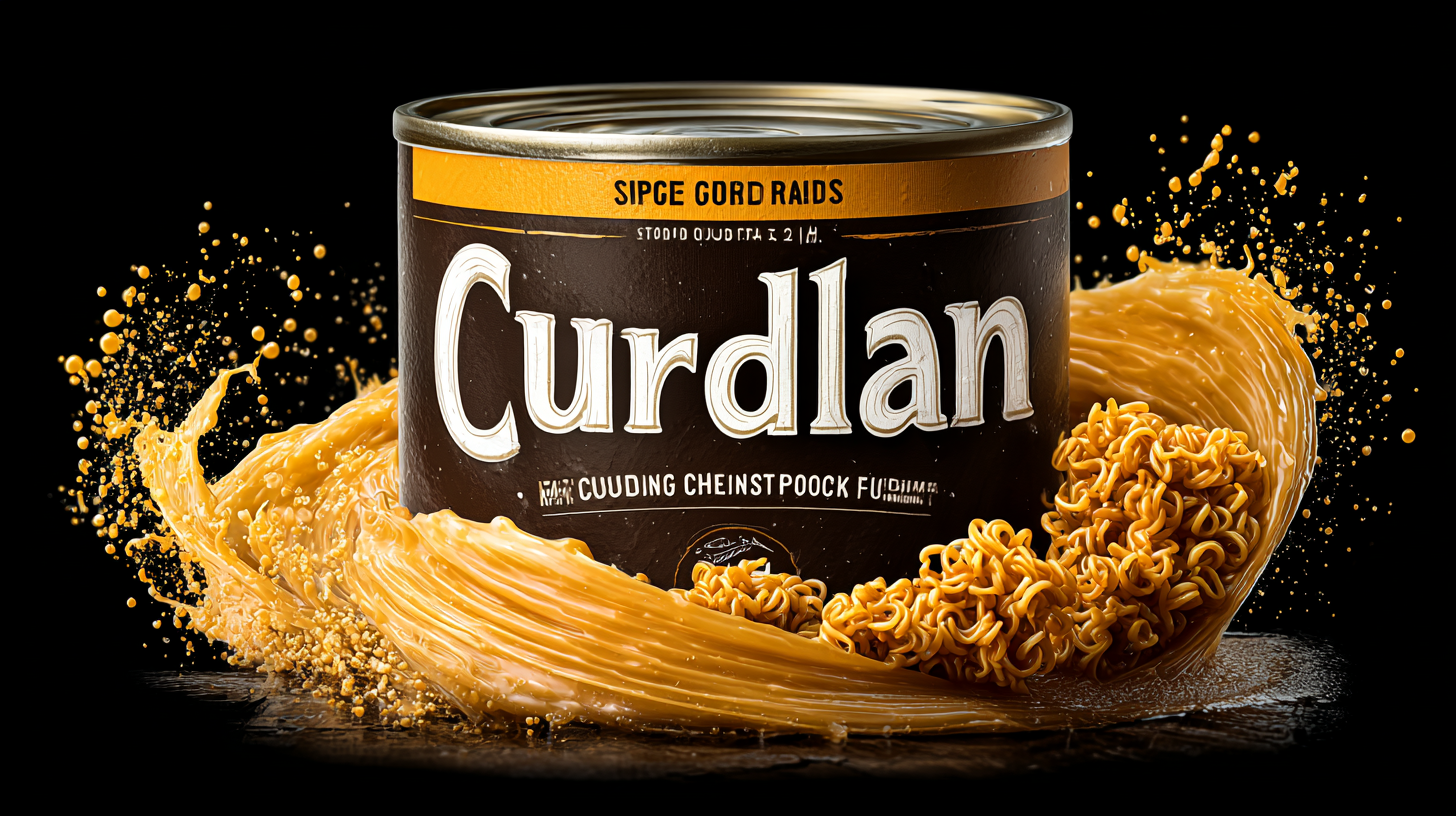


In the evolving landscape of food formulation, Curdlan has emerged as a vital ingredient due to its unique gelling properties and functional versatility. According to a report by Grand View Research, the global gellan gum market, which includes Curdlan, is projected to reach USD 1.76 billion by 2025, with a growing demand in the food industry for clean-label and plant-based alternatives. As more food manufacturers seek alternatives to traditional gelling agents, Curdlan stands out for its ability to enhance texture and stability while meeting consumer preferences for healthier options. This guide aims to shed light on the various alternatives available, helping food product developers make informed decisions that align with industry trends and consumer demands for innovative, high-quality food products.

Curdlan is a versatile polysaccharide derived from the fermentation of specific bacteria, primarily *Alcaligenes* species. Its unique gelling properties make it an excellent choice for a variety of food products, especially in the realm of vegan and vegetarian alternatives. Curdlan is typically used in applications such as sauces, desserts, and dairy alternatives, where it acts as a thickening agent and stabilizer. Understanding how Curdlan functions will help in selecting the right type for your food formulations.
When incorporating Curdlan into your recipes, consider the following tips. First, always hydrate Curdlan in warm water to fully activate its gelling capability. This step ensures that it blends seamlessly with other ingredients, preventing clumping and ensuring a smooth texture. Second, experiment with the concentrations of Curdlan; a small amount can significantly affect the consistency of the final product. Finally, keep in mind that Curdlan works best in combination with other hydrocolloids for enhanced texture and stability, so don’t hesitate to create blends that optimize its performance.
With the right knowledge, you can leverage Curdlan's properties to improve the quality and appeal of your food products, making it a valuable ingredient in your culinary toolkit.
Curdlan, a versatile polysaccharide derived from specific bacteria, is gaining attention in the food industry for its unique gel-forming abilities. There are several types of curdlan, each with distinct properties that cater to different culinary needs. For instance, low-acyl curdlan displays excellent gelling capabilities at lower concentrations, making it ideal for products like jellies and thick sauces. Its ability to form stable gels under varying temperatures allows manufacturers to create a wider range of desserts and food applications.
On the other hand, high-acyl curdlan is known for its exceptional textural qualities, offering a softer and creamier mouthfeel. This variety is often used in creamy soups and dairy alternatives, providing a pleasant texture without compromising flavor. Moreover, due to its good stability against heat and acidity, high-acyl curdlan is perfect for processed foods that require a longer shelf life. Understanding these different types of curdlan and their unique properties is essential for food producers aiming to enhance their products and offer innovative solutions to consumers.
| Curdlan Type | Origin | Texture | Gelling Properties | Applications |
|---|---|---|---|---|
| Curdlan A | Japan | Firm Gel | High heat resistance | Meat products, sauces |
| Curdlan B | USA | Soft Gel | Low heat resistance | Desserts, yogurts |
| Curdlan C | Korea | Elastic Gel | Moderate heat resistance | Noodles, snacks |
| Curdlan D | China | Rigid Gel | High gel strength | Canned products, sauces |
When selecting the best curdlan for your culinary creations, several key factors should be considered to ensure optimal results. First and foremost, it's essential to determine the desired texture and consistency for your recipes. Curdlan is known for its ability to form gels, which can vary in firmness depending on the concentration used. If you're aiming for a delicate, silky texture in sauces or desserts, a lower concentration may be preferable. Conversely, for more robust applications like meat products or savory dishes, a higher concentration can provide the necessary structure.
Additionally, the source and quality of curdlan can significantly impact the flavor profile of your dishes. Generally derived from the fermentation of specific bacteria in a natural setting, it's crucial to opt for high-quality curdlan that has been produced sustainably. By sourcing from reputable suppliers, you can enhance the taste and texture of your food products. Lastly, consider any dietary restrictions or consumer preferences, such as vegan or gluten-free requirements, when making your choice. By paying attention to these factors, you can select the perfect curdlan that not only meets your culinary needs but also elevates your dishes to new heights.

Curdlan, a natural polysaccharide derived from the fermentation of certain bacteria, has become increasingly popular in various food applications. Its unique gelling properties make it an excellent choice for a wide range of products, from dairy to vegan alternatives. In dairy applications, curdlan is often used to enhance texture, improve stability, and offer a creamy mouthfeel. For instance, it can be found in yogurt, cheese, and other dairy-based desserts, where it helps maintain consistency and prevents syneresis.
In the realm of vegan products, curdlan serves as a fantastic replacement for gelatin and other animal-derived thickeners. It can be utilized in plant-based alternatives like vegan cheeses and desserts, allowing manufacturers to achieve desirable textures without compromising on taste. When choosing curdlan for your food products, consider the specific functionality you require.
**Tips:** Always test curdlan in small batches to find the right concentration for your recipes, as its gel strength can vary. Additionally, be mindful of the required heating process, as curdlan performs optimally when dissolved in hot water. Lastly, consult with suppliers to ensure you are selecting high-quality curdlan that is free from additives, thereby meeting your production standards and consumer expectations.
When evaluating curdlan for your food products, it's essential to start with a thorough understanding of its performance characteristics. Begin by testing the gel strength of different curdlan samples. This can be achieved through a series of rheological tests that measure viscosity changes when subjected to varying temperatures and shear rates. The gel strength must align with your product requirements, whether you're aiming for a firm texture in a savory dish or a softer consistency in desserts.

Next, consider conducting taste and texture panels to gauge consumer acceptance. Prepare sample batches incorporating various concentrations of curdlan, and assess their mouthfeel, flavor release, and overall palatability. It's also crucial to examine the stability of curdlan under different storage conditions. Conduct shelf-life tests to monitor any changes in texture or flavor over time, ensuring that the curdlan maintains its properties throughout the product's intended lifespan. This meticulous approach allows you to choose the best curdlan for your specific applications, ultimately leading to a superior final product.